The title of this article, “Decolonization will not be stopped,” comes from the graffiti on the monument to Aleksandr Pushkin in Kyiv, dismantled on 15 November 2023.
This happened almost exactly ten years after the statue of communist idol Vladimir Lenin was toppled in Kyiv on 8 December 2013, in the early days of what later became known as the Revolution of Dignity.

Unlike the case with Lenin, torn down by Ukrainian oppositional activists, Pushkin’s removal was state-authorized. On 10 November 2022, the Cabinet of Ministers allowed removing monuments to Russian and Soviet leaders and cultural figures from the State Register of Immovable Cultural Heritage, thus enabling their official dismantling.
These two cases – the illegal toppling of the despicable political leader and the official removal of a generally likable poet (whose verses many older Ukrainians still can quote by heart) – provide a striking example of the social and cultural processes that have been unfolding and intensifying during this last decade.
These processes – a massive change in toponyms, dismantling the monuments both to the political and cultural leaders, even changing the church calendar ⓘ – aim to severe all the past cultural and social affiliation with Russia.
Not all of these are completely new. Some of the practices (like changing the names of the streets or dismantling monuments to communist leaders) had been employed since the collapse of the USSR. However, Russian imperialism and cultural hegemony were ingrained so deeply into everyday life that it was not even felt as such, and the process of severing ties with the past stalled for another two decades.
There were nostalgic movies, books, and music from the Soviet past. Cultural festivals and academic conferences with participants mainly from Russia, Ukraine, and Belarus. An Orthodox Church governed from Moscow. A largely self-contained sector of digital space (so-called “runet”), where an alternative culture bloomed. And, of course, the Russian language.
All of this constituted a shared cultural and intellectual space, profited by some and never questioned by the most.
However, as attempts of Russia to regain its political hegemony escalated from interventions into Ukrainian politics to annexation, occupation, and, finally, the full-scale invasion of 2022, the desire of the Ukrainians to get rid of all those shared past once and for all intensified as well.
To move beyond emotionally driven and anarchic Leninopad ⓘ and into legal action, we needed a common framework and terminology.
At first, media and officials mostly used the term decommunization. Later, as the attention shifted from the hated Soviet leaders to the deeper past of Russian imperialism, the term de-Russification became more widely used.
Recently, Ukrainian cultural media and activists started to employ even more broad terms: decolonization.
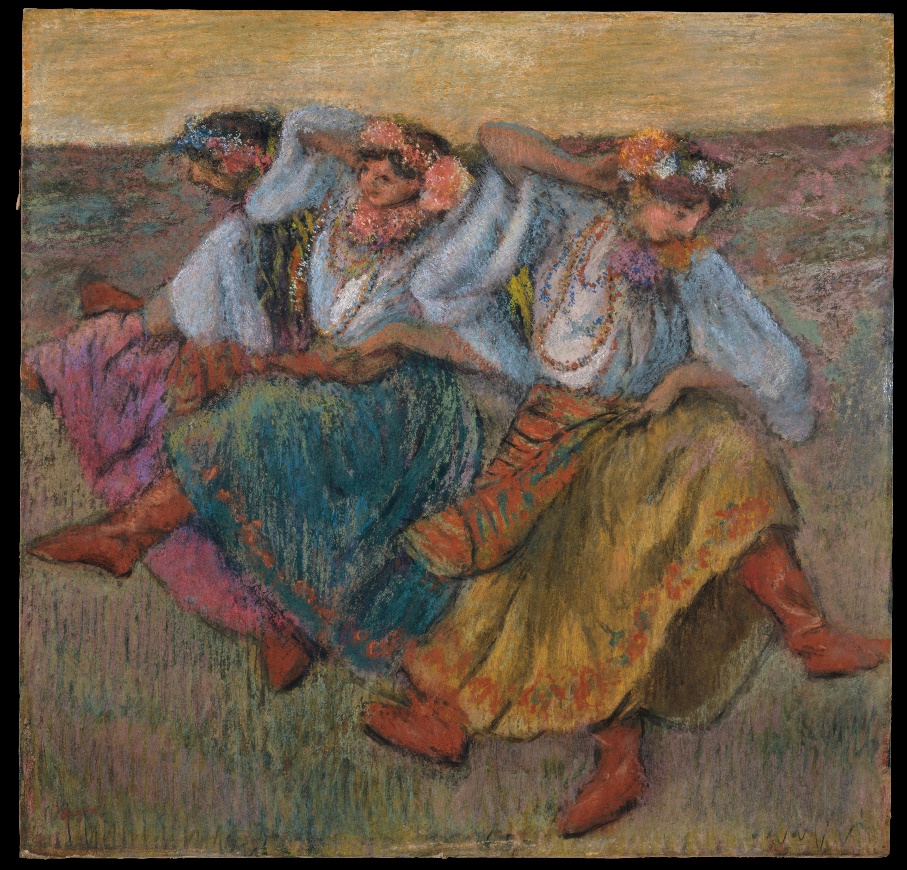
Are Degas’ pastels worth the effort?
This surge in interest in the topic of decolonization was prompted by several cases of reattribution of the exhibits in some of the prominent Western museums that happened in late 2022-early 2023.
The most widely discussed were the following cases:
- The Metropolitan Museum of Art in New York changed the names of Edgar Degas pieces from “Russian Dancers” to “Dancers in Ukrainian Dress” and attributed Illia Repin as a Ukrainian artist;
- The National Gallery in London renamed one of its Degas pastels from “Russian Dancers” to “Ukrainian Dancers”;
- Paul Getty Museum in Los Angeles, while dealing with similar Degas’ pastels, left the title “Russian Dancers” but added a note that those dancers were actually Ukrainian;
- The Metropolitan Museum of Art in New York added a note to Arkhyp Kuindzhi’s ⓘ “Red Sunset,” mentioning the artist’s multicultural heritage and Ukrainian roots, and informing the reader that in March 2022, the Kuindzhi Art Museum in Mariupol, Ukraine, was destroyed in a Russian airstrike;
Ukrainian media met the news of reattribution with great enthusiasm, while Western journalists reacted with wariness (for example, the article in the New York Times mentions “pressure” the museums face from the activists and claims that “it’s not always simple to write a wall label”).
The changes in attribution might seem modest (and easy) for an outside observer. However, the museums did not initiate those changes themselves. Instead, Ukrainian cultural activists put enormous efforts to achieve them.
Each tiny change has the name and the story behind it. Art historian Oksana Semenik, whose correspondence with the museums made the Degas and Repin reattributions possible, survived the occupation of Bucha.
Noisy Ukrainian cultural activists happen to be mostly female, survivors, refugees, and mothers of small children. Their diplomatic work is not only time consuming but requires a great deal of emotional labor.
After the initial grassroots phase, the Ukrainian Institute (a state institution for cultural diplomacy and promoting Ukrainian culture abroad) has decided to take a more systemic approach and will issue an official decolonization guide for the museums abroad (focusing on Ukraine).
Considering all the intellectual and emotional toll of achieving even the small changes, the question arises: are titles of Degas pastels and correctly indicated artists’ nationality worth the effort? Surely, there must be more important things for Ukrainians to care about?
One must understand: we were virtually erased from world culture and art for a very long time, and museums played a significant role in this. When the survival of the culture is at stake, increasing the visibility of this culture is crucial. That is the reason why this article focuses mainly on the topic of museum decolonization.
Decolonizing museums: practice and rhetoric
Originally, the term “decolonization” denoted independence and resistance movements that ended the direct colonial rule of Western imperial powers.
However, political independence did not put an end to the imperial legacies. Subtly and often invisibly, those legacies remain embedded into the social and cultural everyday life (in both ex-colonies and ex-empires), thus continuing to influence power distribution.
Contemporary decolonization aims to reveal and eradicate these hidden influences, and here, museums come into focus.
The social role of museums goes far beyond heritage preservation, education, and entertainment. They reflect how a given society sees its past and defines the present; they both reveal and shape society’s values.

Thus, museums do not simply collect and exhibit historical items; they are part of specific political history themselves. Even the very concept of a public museum (as opposed to the private collection) is political, reflecting the ideal of a new, more egalitarian society.
A prime example would be the Louvre in Paris, which was opened to the public during the French Revolution.
Obviously, such crucial political features of modern Western society as empire building and exploitation of the colonies left deep traces in the structure of most European and American museums. The precursors of the modern museums – so called cabinets of curiosities – became popular after expeditions to the colonies brought numerous natural history specimens and artifacts to the European public curious eyes.
Harshly speaking, those objects were the spoils of colonization. Some of these collections developed into the first public museums (including the famous British Museum). While educating and entertaining the public, they glorified the colonizers as a pinnacle of natural and cultural evolution, and simultaneously exoticized and belittled the colonized nations.
After overt imperial thinking went out of fashion, museums hid their complicated histories under the mask of academic neutrality. Nowadays, we see the movement of recognizing the complexity of history and attempts to change imperial narratives – that is, the museum decolonization.
In the recent decade, decolonizing practices became basically a sign of a respectable museum institution. Aside from the reattribution of museum pieces, such practices may look like this:
- Changing temporary and permanent exhibitions to ensure art pieces and historical items from previously neglected communities are prominent. For example, the Whitney Museum of American Art used to collect and exhibit mainly white American artists. Nowadays, its focus has shifted to include more Latin, Indigenous, and African art;
- Writing new wall texts according to decolonial narratives, thus challenging museum neutrality. Sometimes, that would mean recognizing the museum’s own participation in colonization;
- Employing people from indigenous communities;
- Working directly with indigenous communities to ensure the most respectful approach to their historical heritage. A good example would be the Seattle Art Museum, which collaborated with Native American tribes and communities to incorporate their perspectives in exhibits and programs;
- Recontextualizing problematic pieces. “Recontextualization” is an umbrella term that includes many various practices. Those may look like a contemporary artist intervention in the permanent museum exhibition, temporary exhibitions specifically dedicated to problematizing some points in history, or collaboration of artists, museum curators, and sometimes even political activists. A simple example would be the exhibition of the graffitied statue of the slave trader Edward Colston’s statue in the M Shed museum in Bristol after it had been toppled in June 2020 during BLN protests. An example of recontextualization, involving the curator’s work with the museum collection and activists’ participation would be the exhibition “Heroes. An Attempt of Inventory” in the National Art Museum of Ukraine in 2014. This exhibition featured numerous Lenins from the museum collection as well as pieces of one of the Lenins torn down during Leninopad;
- Restitution and repatriation. Those we may call the most “direct” (and the most rarely employed) decolonizing practices, as both terms mean giving back museum pieces to the nation of states (repatriation) or communities (restitution) they originally were taken from. In 2019, the sabre of Omar Saidou Tall, seized as a trophy of war in 1893, was returned from Paris to Dakar. In 2022 Metropolitan Museum of Art in New York City returned two Benin Bronzes, which were looted during the Benin Expedition of 1897, to Nigeria.
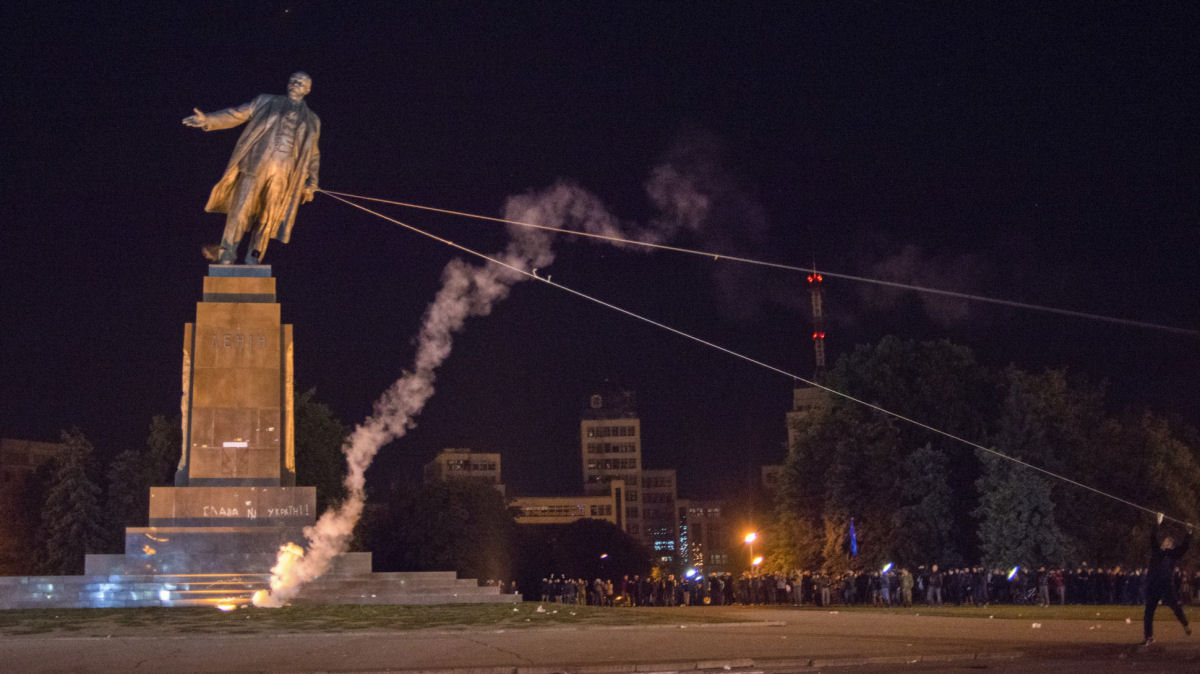
The aforementioned examples deal, for the most part, with the visitor’s experience. A detailed instruction on the working processes organization for the museum employees can be found in the Guidance on supporting decolonization in museums by the Museums Association (Britain).
As it serves as a model of the future decolonization guide by the Ukrainian Institute, it is important to determine which suggestions from the Guidance apply to the present situation.
Much is said about open, inclusive, and safe spaces, where everybody is heard, and everyone’s story is told, about giving voice to underrepresented communities and treating everyone with integrity and respect. The Guidance shares this progressive decolonial rhetoric with popular articles and texts directed to the professional audience (including the new official definition of “museum” adopted by ICOM in 2022 ⓘ.)
The leading Ukrainian museum institutions know this kind of discourse well and have been employing it for at least a decade already. However, some other suggestions in the same progressive rhetoric are less applicable.
Encouraging museum workers to acknowledge power and privilege, to move aside from the position of authority is definitely the right thing to do. But only for those who are already in a position of power, privilege, and authority.
It seems that despite their well-meaning efforts and many useful tips and ideas, the existing museum recommendations do not provide sufficient instruments for museum workers from the historically oppressed side. Perhaps it is our job to develop such instruments.
Decolonizing museums: criticism and blind spots
The contradiction between an appeal to move from the position of authority and speaking from this very position is only one of many points of criticism of museum decolonization.
Activists criticize museum decolonization as limited and insufficient in dealing with the issues it ostensibly tries to overcome. Some argue that most of the abovementioned practices simply make the surface more presentable while keeping all the power structures intact.
This especially applies to large museums with famous collections and wealthy donors, where money and politics get involved. The Decolonize This Place movement suggests a more radical approach.

DTP activists organize demonstrations at prominent New York museums (Brooklyn Museum, Whitney Museum, American Museum of Natural History), demanding the museum authorities take direct (and presumably unpopular) actions supporting indigenous rights, migrants, and black communities.
Sometimes they succeed, like in the case of Whitney museum, where protesters demanded to remove Warren B. Kanders, vice chairman of the Whitney board of directors and the owner of the manufacturer of tear gas that has been used on people crossing the US-Mexico border, from the board.
After several months of protests, Kanders resigned from his position.
Even though it is New York-based, DTP mentions many other colonial and postcolonial countries in their demonstrations (with specific campaigns in support of Palestine).
However, none of the post-Soviet countries come under their scope of attention.
Politics, big money, desire to keep one’s place in the power structure and not to part with any cultural capital could explain cases where even the most elaborated practice of museum decolonization falls short.
One of the most widely discussed cases of contested heritage concerns the British Museum and the famous “Elgin” marbles from the Parthenon. In the early 19th century, when Greece was under the rule of the Ottoman Empire, agents of Thomas Bruce, the 7th Earl of Elgin removed about half the Parthenon sculptures and sent them to Britain.
There, they became one of the most famous exhibits of the British Museum.
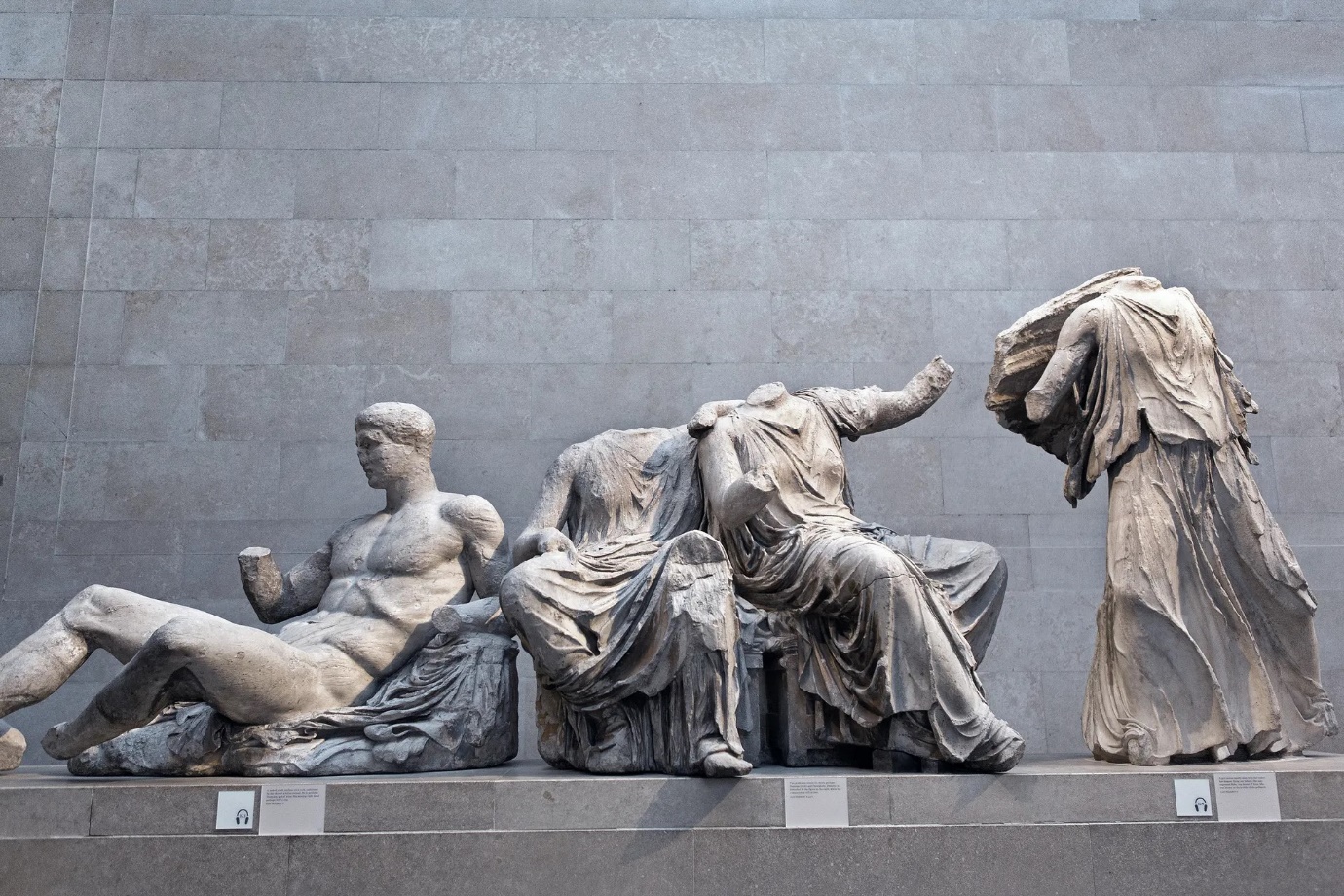
While even some contemporaries (including Lord Byron) compared Elgin’s actions to looting, the official position of the UK authorities ever since 1816 has stated that the marbles had been acquired legally, constitute a great asset to the country and thus must remain in the British Museum.
Meanwhile, Greece asserts that taking the marbles was an act of theft; they belong to the Greek cultural heritage and must be returned to their homeland.
The conflict reignited last spring (coincidentally, during the same period, when Ukrainian media were buzzing with the first international successes of museum decolonization), when the UK authorities stated again that the Parthenon marbles are a “huge asset” to the country and will remain in the UK.
The British Museum Trustees’ statement emphasized public benefit, claiming that the exhibition of Parthenon sculptures in the British Museum, alongside other civilizations, offers a unique experience for the visitors – implying that this experience would be impossible in Athens.
While concerns about the fullness of the visitors’ experience might even be genuine, this approach stays in striking contrast with the suggestions on museum decolonization we read earlier.
Russian imperialism: the blindest spot of cultural decolonization
In all the heated discussions around decolonizing museums and cultural decolonization in general, the Russian legacy of imperialism, colonialism, and oppression has been largely omitted. However, the reasons for that are more complicated than in the cases with first-world countries’ reluctance to part with long hold treasures.
In the West, Russia has been seen as “Other,” a mysterious land of odd “Dostoyevsky” souls, never quite admitted in the club of developed Western nations. This means that in the collective Western psyche, Russia is somehow excluded from the civilized vices of imperialism and colonialism.
As decolonial researcher Madina Tlostanova mentions, the Russian self-image evolved in this otherness in relation to the West.
Concerning Ukraine, this constant oscillation between opposite points has become even more obvious since the start of the war: starting from Putin himself, Russian propagandists constantly jump from accusing Ukraine of all the vices of the “decaying West” (from Nazism to “sodomy”) to claiming that Ukraine never existed and is really just a part of Russia.
Things are further complicated by the fact that Russia’s relationships with the nations it oppressed have not followed the typical pattern of colonization in the Modern era (especially if we take the British Empire as a model of colonial rule).
Russian imperialism differs from the British variety in that Russian colonies were not overseas like British ones, and in the European part of the empire, colonizers and colonized mostly were ethnically close.
In post-Soviet Russia, the infamous “people of non-Slavic appearance” and “persons of Caucasian nationality” catchphrases have been used to discriminate against nations from Caucasus and Asia openly. Of course, it does not mean that those who pass “Slavic appearance” checks are exempt from discrimination.
Russian imperialism is also manifest in everyday chauvinism. From ethnic slurs (widely used in a “friendly” way) and dumb jokes about Ukrainians’ presumable love of lard, to condescending musings of numerous Russian writers, there is an image of a Ukrainian as somebody inherently less than a Russian.

This “little Russian” is supposed to love food and comfort and sing nice melodic songs; Ukrainian women are expected to be attractive and soft, ready to fall into the arms of Russian men. At the same time, Ukrainians are perceived as lacking spiritual and intellectual depth, over materialistic, and often deceptive.
Despite this all-pervading “friendly” discrimination, Ukrainians (and other representatives of the colonized nations) could still hold high political, social, and cultural positions within the Russian Empire and, later, the Soviet Union.
Even more, all the social and cultural structures ensured that most of the talented people were sucked away to the centers to serve the empire – like in the case of the artists who contributed to the so-called “Russian” avant-garde.
Those who did not forget about their national identity (as was expected from them) often ended up being persecuted and repressed.
Thus, deprived of most of its talents, Russian colonies inevitably fell behind culturally and intellectually.
The romanticized image of Russia in the Western imagination, the historical differences between it and the West, and the colonialization-provincialization dynamic that created Russia’s ostensibly rich imperial culture helped it avoid critical examination within progressive decolonial discourse.
Russia fell through the cracks, never to be called out for its colonizing record until its recent aggression made its imperialist ambitions clear.
How Russia shaled its identity through destruction
One of the results of the intertwined processes of colonization and provincialization was that the largest art museums with the richest collections on the post-Soviet territory are concentrated in the imperial centers of Moscow and St.Petersburg.
Those museums – State Hermitage, Tretyakov Gallery, Russian Museum – play a significant role in shaping the national identity and presenting the carefully written version of Russian history and culture to internal and external audiences.
To do it successfully, ideologists and cultural workers needed more sophisticated methods than simply bringing the best pieces of art from the provinces to the centers. Instead, they needed to erase real, local history and design a new one aligned with Russian imperialism.
This is especially true in the case of old Ukrainian art, as the same ideologists considered the Kyivan Rus to be the origin of modern Russia.
Perhaps a most poignant example are the mosaics and frescoes from St. Michael Golden-Domed Monastery in Kyiv.
Built in the 12th – 13th centuries, the monastery cathedral was decorated with intricate Byzantine-style mosaics and frescoes. Many of them were still in place in 1934, when the Soviet authorities decided to demolish the monastery to build the new government center.
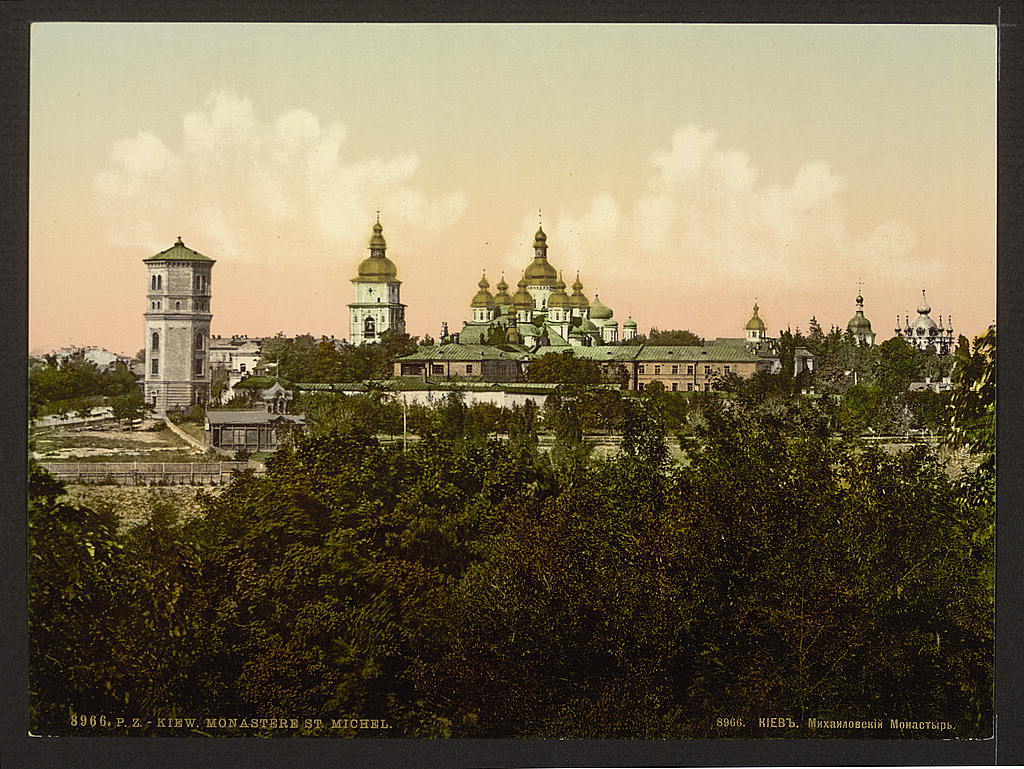
To justify the demolition, pro-government “researchers” falsely stated that reconstructions of the 18th century left almost nothing of the ancient Byzantine cathedral.
Notably, the art and architecture of the 18th century, the heyday of the Ukrainian Baroque, was not considered worth preserving.
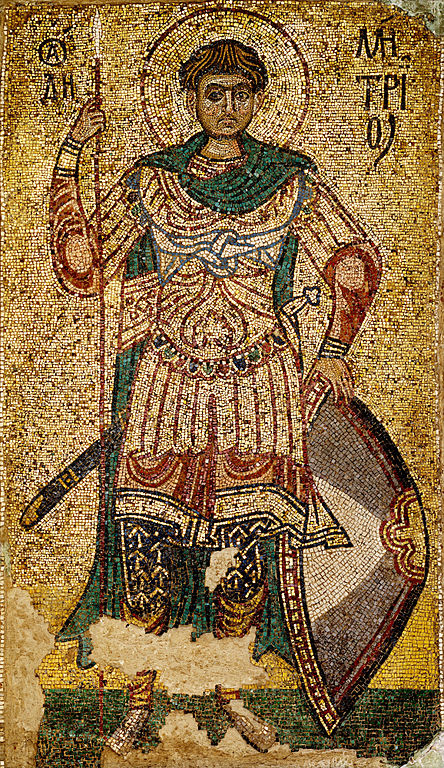
The remaining mosaics and frescoes were hastily removed, losing about 100 kg of mosaic pieces in the process. In 1938, the Tretyakov Gallery “borrowed” some of the most significant fragments to the exhibition – and there they remain still.
As the website of the Tretyakov gallery states, 11 icons and 4 fragments of mosaics and frescoes from the Michael Golden-Domed monastery constitute the most ancient and the most valuable part of the gallery collection.
The St. Michael’s Monastery, with its Byzantine walls and baroque decorations, embodied the real multilayered history of Kyiv. Its destruction allowed creating a new, castrated history – and transferring it to Moscow.
Exhibited within the walls of the most prominent Russian museums, Kyiv Byzantine mosaics now subtly but effectively supported the idea of Russia as the real successor of an ancient Kyivan Rus, while Kyiv itself was titled “a younger brother of great Moscow.”
Since the collapse of the USSR, there were some feeble attempts at museum restitution. However, the best pieces always remain in the collection of Russian museums. This is unsurprising, as Russia never started the process of decolonization itself, always publicly presenting itself as a victim.
In 2023, some Russian emigree intellectuals started an education program for Russian-speaking audiences on Russian imperialism and the colonial history of Russia. However, these intellectuals constitute a minority of the minority, even among the Russian opposition.
Conclusions: Russia not expected to confront its imperialist past anytime soon
While using decolonial discourse and the term decolonization itself might be a recent phenomenon in Ukraine, the processes that fall under this term have been happening for quite a long time. They gained momentum after Euromaidan, especially since the full-scale Russian invasion started.
Both the term and practice have been employed not only by academics but also by activists, politicians, and wider society. This intensity contrasts with the reluctance of Western media and intellectual circles to recognize the need for decolonization regarding the post-Soviet heritage.
Changing the discourse on an international level still requires enormous efforts, and every little victory was achieved with a high level of both intellectual and emotional labor.
Reattributing museum pieces might seem like a small thing. However, museums do not simply show but shape society’s identity, values, and worldview. They can greatly contribute to spreading false history narratives and glorifying and supporting current power structures.
On the other hand, museums can help to reveal the truth and empower the oppressed.
Erased from the museums would often mean erased from the world culture (an axiom Russia knows perfectly well). Each time when oppressed culture finds its way into the museum practice (for example, when the word “Ukrainian” appears where it previously was “Russian” or none at all), the visibility of this culture is increased. With increased visibility come increased opportunities.
Ukrainian cultural activists are very enthusiastic about cultural decolonization in general and decolonizing museums in particular. However, cultural decolonization has its limitations and blind spots, which are not always possible to overcome, even for the most developed museum practice. Especially when either large political and cultural capital is at stake or/and the history of colonialism and oppression does not follow the typical pattern for modern Western nations.
Russian imperialism has been such a blind spot in decolonial discourse for a very long time, even though Russia exploited its colonies physically and intellectually, discriminated against colonized nations, and destroyed their cultural heritage to create its own version of history, where Russia would be glorified.
While Western nations participate in the process of cultural decolonization on their own, however reluctantly, Russia will not admit any of its wrongdoings in the foreseeable future.
While first efforts at least to raise the issue of decolonization by a tiny minority of Russian emigree activists are commendable, they are not enough yet to make any perceptible difference.
However, we – Ukrainians and other ex-colonized nations – can make a difference. There are already many instruments available that we can use, adjust to our situation, or create some completely new ones. At this moment and place in history, we are actors, not objects of decolonization.
Related:
- Pushkin monuments disappear from Ukrainian streets following Lenin, as decolonization is underway
- Non-Russian avant-garde, or how Russia appropriates Ukrainian culture
- A taste of Ukraine’s poetic Renaissance executed by Stalin
- Genocide, assimilation, theft: Kazakh historian reveals Russian colonialism’s ruthless playbook
- Texty: Russian museums refuse to return 110,000 Ukrainian looted treasures
- Orientalism reanimated: colonial thinking in Western analysts’ comments on Ukraine
- Can America look to Ukraine for guidance on their growing monument problem?




